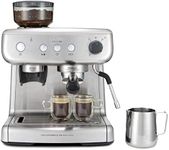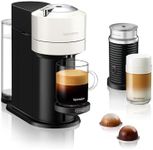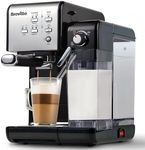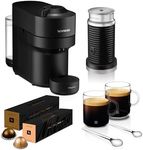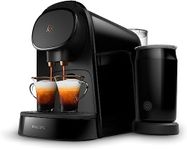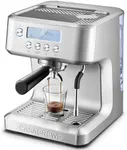Buying Guide for the Best Barista Machine
Choosing the right barista machine can significantly enhance your coffee-making experience at home or in a small café. The key is to understand your needs and preferences, as well as the features that different machines offer. Consider how often you'll use the machine, the types of coffee you enjoy, and how much control you want over the brewing process. By focusing on the key specifications, you can find a machine that suits your lifestyle and coffee preferences.Type of MachineBarista machines come in various types, including manual, semi-automatic, automatic, and super-automatic. This specification is important because it determines how much control you have over the coffee-making process. Manual machines offer the most control but require skill and practice. Semi-automatic machines provide a balance between control and convenience, allowing you to manually start and stop the extraction. Automatic machines automate the extraction process, while super-automatic machines handle everything from grinding to brewing. Choose a type based on your skill level and how involved you want to be in the coffee-making process.
PressurePressure, measured in bars, is crucial for extracting the flavors from coffee grounds. Most barista machines operate at 9 bars, which is considered optimal for espresso. Machines with higher pressure can produce a richer crema and more intense flavors. If you enjoy strong, flavorful espresso, look for machines with at least 9 bars of pressure. However, if you're new to espresso making, a machine with standard pressure will suffice as you learn the ropes.
Boiler TypeThe boiler type affects the machine's ability to maintain consistent temperature and steam pressure. Single boilers are suitable for making one type of coffee at a time, while dual boilers allow simultaneous brewing and steaming, which is ideal for making lattes and cappuccinos. Heat exchange boilers offer a middle ground, allowing you to brew and steam with some delay. Consider a dual boiler if you frequently make milk-based drinks, or a single boiler if you primarily drink espresso.
GrinderSome barista machines come with built-in grinders, which can be convenient and save space. The grinder's quality affects the consistency of the coffee grounds, which in turn impacts the flavor of the coffee. Burr grinders are preferred over blade grinders for their ability to produce uniform grounds. If you value convenience and have limited space, a machine with a built-in grinder might be ideal. However, if you want more control over the grind size, consider a separate, high-quality grinder.
Milk FrothingMilk frothing capabilities are important if you enjoy milk-based drinks like lattes and cappuccinos. Machines may have a steam wand or an automatic frothing system. A steam wand offers more control and allows you to create microfoam for latte art, but requires practice. Automatic frothing systems are easier to use and more consistent, making them suitable for beginners. Choose based on your preference for control versus convenience.
Size and CapacityThe size and capacity of a barista machine determine how much space it will take up and how much coffee it can produce at once. Larger machines with bigger water tanks and bean hoppers are suitable for frequent use or serving multiple people. Smaller machines are more compact and suitable for limited counter space or occasional use. Consider your available space and how much coffee you typically make when choosing the size and capacity.

